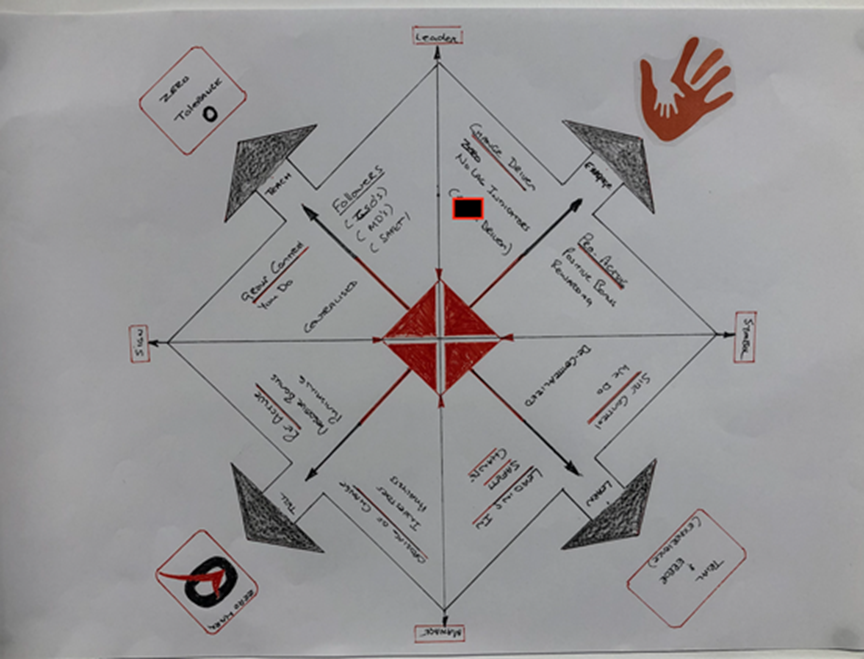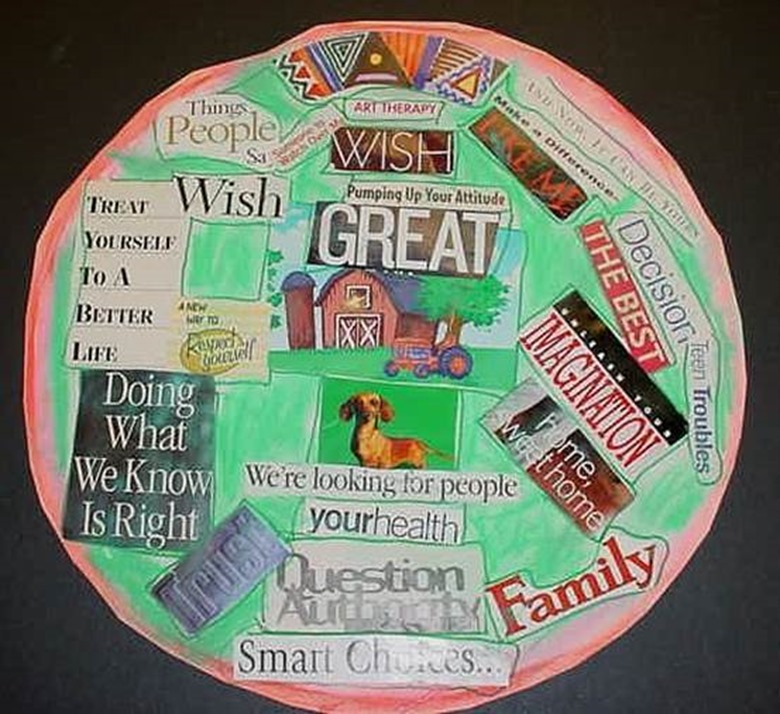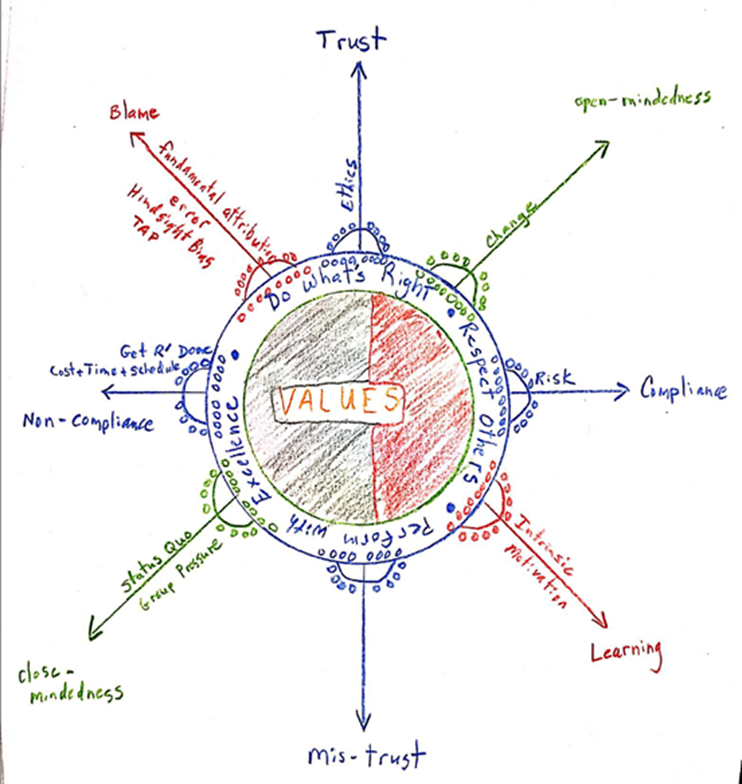Originally posted on October 4, 2020 @ 10:43 AM
Tensions and Faultiness in Risk
One of the activities we undertake in the free introduction to the Social Psychology of Risk is to map the operational, emotional and ideological fault lines and tensions in the Industry. In so doing we are able to visualize the dialectic and ‘push and pull’ of doing the work of helping people tackle risk. If you don’t understand the dialectic in your job, you will after you have done this exercise.
In many SPoR workshops we visualize and map the challenges that face us in tackling risk and we get a better idea of where we sit and about the ‘Wicked’ nature of the task. Visualising and concept mapping (http://www.ucolick.org/~max/289/Concept%20Maps/About%20concept%20maps/KindsOfConceptMaps.pdf) are better ways of observing relationships than tables and checklists. So for this exercise we introduce a concept that has been known for millennia in all civilizations – the mandala (https://www.invaluable.com/blog/what-is-a-mandala/).
The mandala is a simple infographic that positions binary oppositions and their tension points. It is an ancient form of symbolism used across all civilizations (https://www.ancient-symbols.com/symbols-directory/mandala.html) whether drawn in the sand, on rocks or in caves. It was re-discovered by C.G. Jung in Mandala Symbolism (https://www.jstor.org/stable/j.ctt1m32206) and given psychic significance as a mode of visualizing tensions in living.
The studies on mandala symbolism and therapies associated with its activity are extensive (http://www.atpweb.org/jtparchive/trps-37-02-164.pdf; http://www.arttherapyblog.com/art-therapy-ideas/healing-with-mandala-art-a-multi-cultural-idea-worth-exploring/#.X3jn-FlS_UI). There are a host of books available for you to discover this ancient art form and practice it (https://www.amazon.com.au/Mandala-Symbolism-Techniques-Innovative-Professionals-ebook/dp/B00CQ8OC3A). There is a whole movement of therapy associated with relaxing, drawing and colouring mandalas as a mode of self-reflection (https://www.stressreliefcoloringapp.com/8-benefits-of-coloring-mandalas-for-your-mind-body/).
So, in our workshops we ask people to think of the binary oppositions at work in their organization (or living) and to draw them on places on a mandala and thereby position themselves in their drawing at the tension point in the graphic. Unless one is familiar and accustomed to the conventions of the mandala then the power of its enactment is often lost. When we do the workshops and talk through the emotions and messages in the infographic, then it becomes an effective way of envisioning the task of ‘helping’ in tackling risk. In some ways it is in the sharing of the mandala that realisations take place, the mandala just happens to be a helpful tool for reflective listening. If you are a safety person and you don’t feel this tension point in your work or these fault lines in your relationships at work, you’re probably already in a bullying organization.
A few examples follow from a workshop to give an idea of the range of things a person in the risk industry juggles on a daily basis. The two examples are from safety people in two large global organisations.
Figure 1. Star and Spiral
In this mandala we see a shape similar to a compass or star and on the four points of the compass we have compliance-creativity and telling-listening. Then between the points of the compass tensions between fear-joy, open-closed, obey-own etc. In this way the map positions concepts and emotions intension with each other side by side with the concepts that push through them. Then most importantly the person has drawn a spiral in the middle as the dialectic point as if to say, being in safety caught in-between is like a vortex.
So we see in this mandala the tension points in this person’s work in advising on risk. There is no black and white but only continual movement between these tension points.
Figure 2. The Boxes of Zero
In this mandala we see a person in a zero oroganisation and the tension points between the ideology of zero and the realities of practice. The four principle binary oppositions are zero and zero tolerance – care and trial and error. Between these tension points are such things as leading, managing, learning, teaching, listening and telling. Then in the middle tension point a dialectic cross to show with arrows, the push and pull of the many concepts that are mapped.
One thing that is clear from this map is that there can be no meeting or dialectic unless one leaves the absolute point of zero in the mandala. Zero doesn’t compromise, zero doesn’t listen, zero cannot give ground. There is no compromise in zero.
Conclusion
In some ways there are no rules for drawing/making a mandala, here is one done by a group as they discussed their work in the safety industry.
Here is a mandala done by one of the recent participants in the free workshop with a particular focus on the challenges of ethics in risk.
So, why not have a go, do a bit or research (https://www.pinterest.com.au/pin/539728336570393311/) on how this art form helps in thinking, reflecting and envisioning and, then post it to me rob@cllr.com.au. I’m happy to have an email or chat about what you discovered. Such is the value of stepping outside of the checklisting box and thinking about the social psychology of risk.







Rob Long says
Hi Bernard, there are some links between ritual, taboo, gesture, enactment, emotions and risk but mostly comes out of what I’ve constructed during the many programs I’ve developed. It’s one of the best ways to learn dialectic.
Of course, all on the AIHS curriculum reading list.
bernardcorden says
Dear Rob,
How much of this relates to the work of Douglas and Waldavsky and Slovic on cultural theory with group and grid relationships?